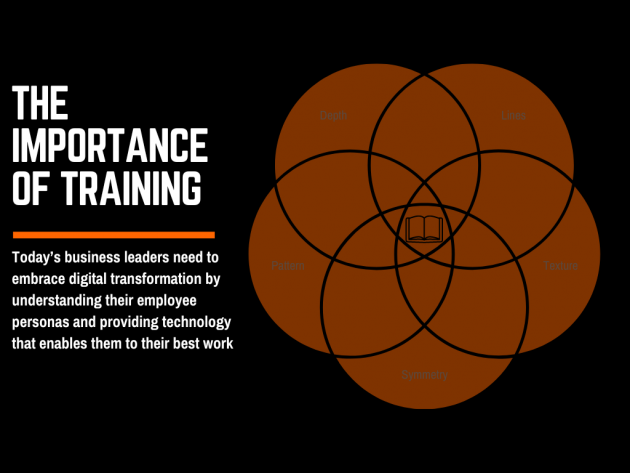
Many companies have been reviewing their business strategies and turn to launch IT solutions to keep businesses running smoothly in highly digital world.
Today’s decision makers need to embrace digital transformation by understanding their employee personas and providing technology that enables them to do their best work. In order to provide business continuity today, companies need to carefully decide which IT solutions fits their business requirements as well as how they can implement these solutions as smoothly as possible.
During the implementation, Change Management should be smooth and aimed to keep the negative impact of the change minimal. Otherwise, the implementation could be painful and disruptive.
However, companies expect new IT solutions to impact their business in a positive way, providing a foundation for development and improvement.
Training has a key role in successful implementations. Unlike consultants and other members of an IT implementation project, training is the way employees are introduced to a new system. Training process can be defined as the first interaction of employees with the new system. After implementing new IT solutions, it is crucial to deliver a training that engages people, motivates them to embrace change and encourages improvement.
As many companies noticed, having a lackluster training program or none at all, will undoubtedly result in low performance at the workplace. Employees who have not been trained properly will be less productive and the quality of work can take a hit too.
When the employees get the proper training, companies would also have more chance of delivering a positive outcome on the project.
Based on our experience we can say that there are several important considerations to successfully deliver an IT system and achieve the business targets:
- Understand the business workflow
- Communication
- Provide training on how the process works, how to do the job, and not how the IT system works Train the process, train the job and not the system
- Trial Run
- Go Live support
- Sustainability
Understand the business workflow
The environment where you are working will determine the path you need to follow. Sometimes you will face lots of difficulties, other times it will be easier as selling ice-cream in the summer.
It is crucial to find out in which situation you are, and why. It may be the experience you gained from previous projects, it may be a concern about the effects on jobs, it may even be that middle management is not really convinced about the need for a change.
Once this is established, accentuate the positive aspects of the project and emphasize the differences in the solution or the approach to the previous project.
It is also important that you identify who are the supporters and opinion formers within your organization. These employees can be a vital support in promoting the new system and the changes it will entail.
You must identify the “doubters” as well; try to involve these people in the development of the solution and give them the opportunity to learn about and support the project.
The training solution must be suitable for the company considering the organizational culture of the business.
Is e-learning an option? Do they only accept on-site trainings? Can you include testing or should you focus only on self assessment? Must you run the training decision through the management hierarchy?
Communication
To keep communication under control is the foremost action to prevent that rumor mill from turning, and allow misinformation to take control of the project.
An effective communication program is a core part of any training solution. If you do not inform people about the change, the reasons for it, and its impact, then the first training course you run will be overtaken by questions from your employees, expressing concerns about the entire project. It will take twice as much effort to guide opinions back onto a positive path.
It is always recommended to be clear on the message – whether it be positive or negative- about the project and inform people clearly and regularly.
„Be consistent, be honest, be timely and make sure you think about the change and communication from the perspective of the recipients.„
Cleohpatra

Train the process, train the job and not the System.
You should train the people on the new ways the system must be used, not only on how good the system is. You can learn how to swim but if you are going to swim open waters and you only practice in the swimming pool you it is very likely that that you are going to get in trouble.
Employees will try to fit the system into the way they used to do their jobs, ignoring the purpose for which the system is designed. Maybe even the leadership still want to work as they used to, for example seeing the reports in the format they are used to, not the new way.
Either way, people would end up doing more work, and not experience the benefits of the new system.
2 key principles to adopt in this case are:
- Train the people to make carry our their tasks they as they will do it „in real life“.
- Training people in relevance to their jobs; for example, a team leader needs to know what the team is doing differently to be able to manage them and understand what they can expect to see improve.
Trial Run
„Rome was not built in a day“
By practicing, people will discover new scenarios and will be prepared for almost any case they are going to face “in real life” with the system. That’s why they need time to practice the new way the system is working. Rehearse or practice their new way of working to understand what the system looks like and how they will perform their new tasks each day, week, month, quarter and year.
Schedule training time dedicated to practice and define what should be practiced and which targets do they have to achieve in every practice. Do not let people just mess around with the system, make them work goal-oriented.
Go-Live Support
The planning and briefing the teams on what to do on launch day is the main purpose on „Go-Live” Support. In accordance with the business requirements, the instructions should be prepared for the first week, month and other critical milestones such as month/year closure… etc. after „Go-Live” day.
This support is important to gather feedback from users and to identify weak points accordingly. These information help companies to correct the system in due time.
The trainers should be always ready to help the employees, not only answering their questions, but also proactively guiding them on their daily work.
Sustainability
To have business continuity after the implementation firstly requires appropriate training documents which need to be provided by the IT Trainer. It would help creating and sustaining know-how in organizations.
Moreover, appropriate training documents will significantly support new employees’ onboarding as well as the consultant for the potential update of the processes or new implementations.
If your goal is to smoothly launch new solutions or maximize the performance of your employees, keep your employees engaged and well trained, and consolidate your training methods into a single platform, reach out to us and take your business to the next level.
